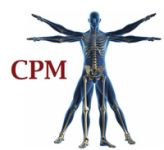Comments Off on Cranial Nerves – CNII
There are 12 pairs of Cranial Nerves
- I – Olfactory nerve
- II – Optic nerve
- III – Oculomotor nerve
- IV – Trochlear nerve
- V – Trigeminal nerve
- VI – Abducens nerve
- VII – Facial nerve
- VIII – Vestibulocochlear nerve/Auditory nerve
- IX – Glossopharyngeal nerve
- X – Vagus nerve
- XI – Spinal accessory nerve/ Accessory nerve
- XII – Hypoglossal nerve
Assignment:
-
Make sure to have the names of all Cranial Nerves in your Notebook.
-
You will need to know the names of the cranial nerves, in order! To help you remember, use a mnemonic. Here are two examples: 1.) On Old Olympus’ Towering Top, A Friendly Viking Grew Vines And Hops. 2.) Odor Of Orangutan Terrified Tarzan After Forty Voracious Gorillas Viciously Attacked Him. (Use the first letter of each word as a memory key to help you remember the CN)
3 Start with the Cranial Nerves Tests
CV III
3 Parts:
-
Ophthalmoscope Exam – Looking in the eye with a scope
-
Vision – 3 tests
a. Visual Acuity – using an eye chart (Snellen or other).
b. Color Vision. Test each eye separately for ability to distinguish colors. Vision is tested using Ishihara plates which identify patients who are color blind. While the most common test is for red/green color blindness, the actual test contains many plates which allows for testing ability to distinguish many colors. An unofficial alternate test can be performed here- Online Color Challenge – Try it and report your score.
c. Visual Fields. This can be tested by a few different methods. Here is an easy one: ask the patient to look directly at you and place one hand over one eye (without pressing down). You stand in front of the patient and put one hand over your opposite eye. Hold your other arm out at eye level, equidistant from both of you, and wiggle one finger as you move your hand inward. You should both see the finger at the same time. Record your results.
-
Pupillary Responses (CN II, III) – To Light
To preform this test you will use a pin light or small flashlight to see if the pupils react to light. Usually a pupil will constrict when going from dark to light.
Assignment:
- Make sure to have all of these exams written in your notebook- Including a description of how to perform each exam.
- Perform all 3 of the tests in part 2 of the CN II exam, the Vision tests. Record your results – Remember to include the patient’s name and your name.


